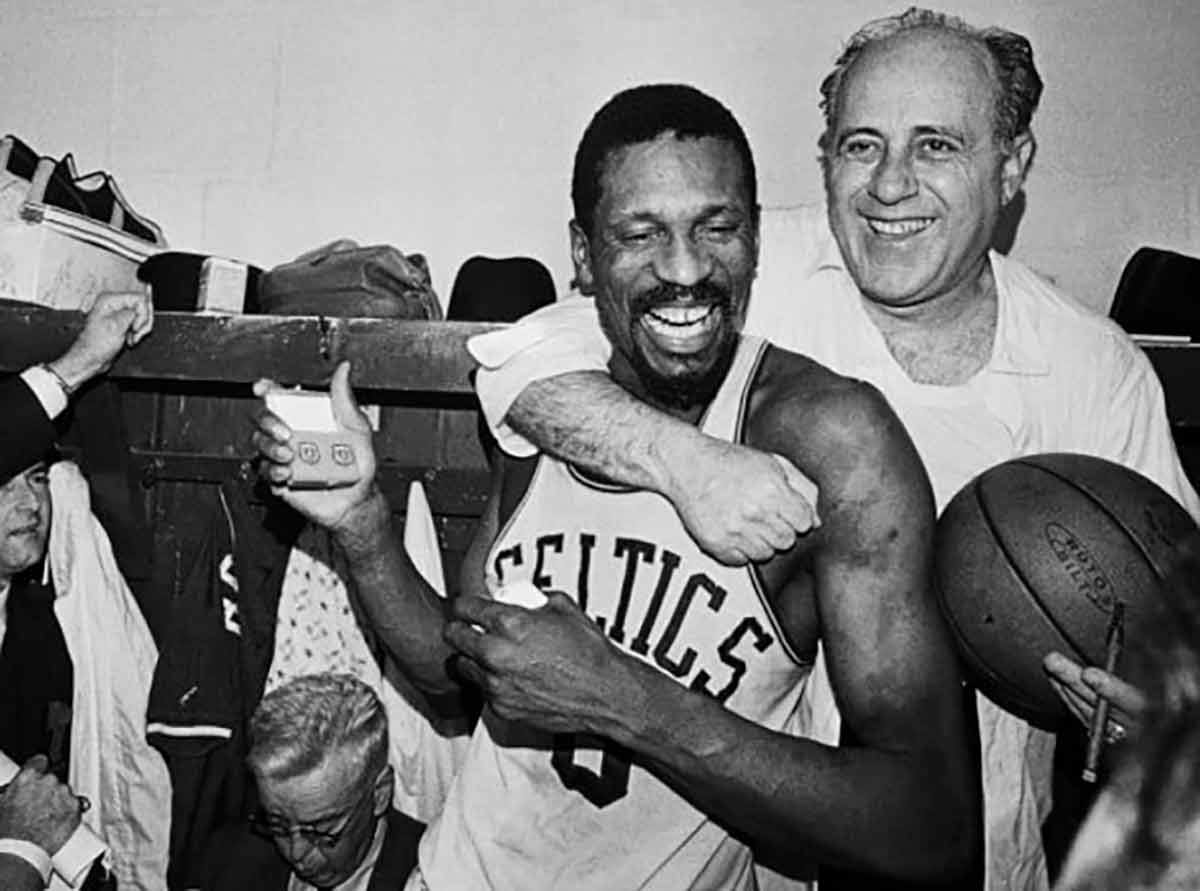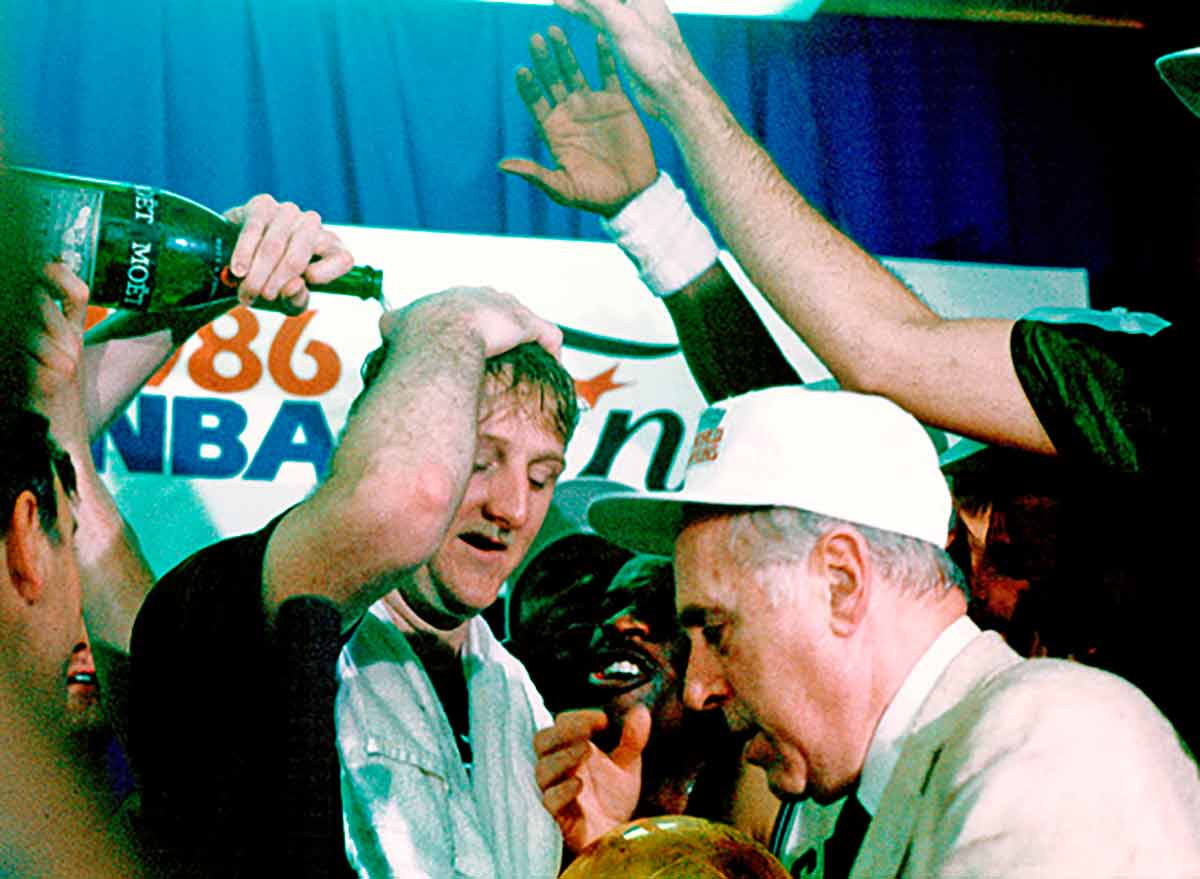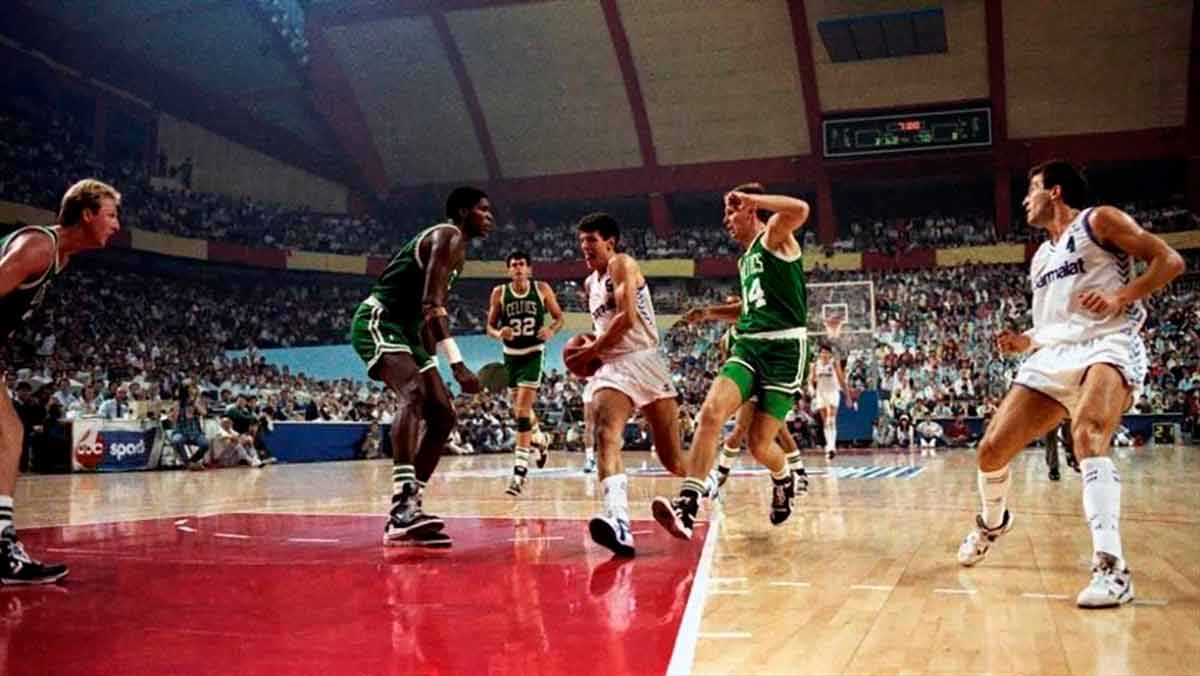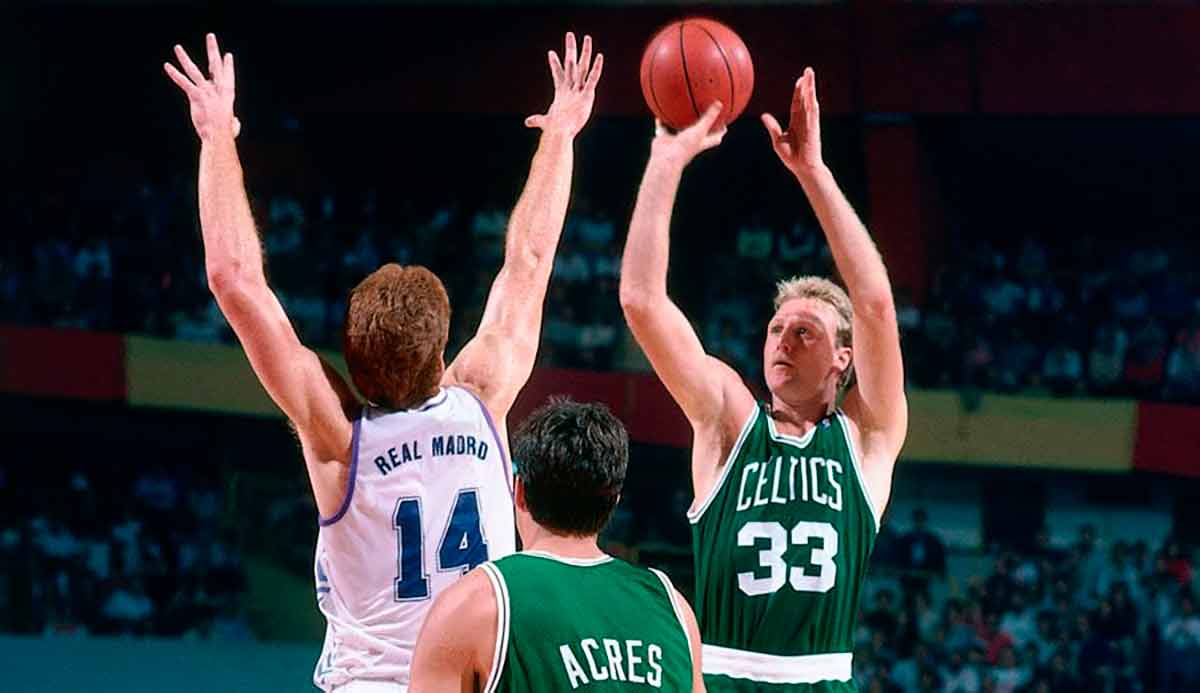N. del E.: Our collaborator Juan Escudero has published a book that we highly recommend. It is entitled “Memories in Green” and is a survey of the exciting history of the Boston Celtics. In this piece, its author reflects on the similarities between Larry Bird’s legendary team and the other great legend from across the ocean: Real Madrid.
The Boston Celtics have been in history the team that has aroused the most dislikes among the American public, as far as basketball is concerned; This fact is difficult to refute. The legends that are told about the unsportsmanlike maneuvers used against opponents and referees have grown over time: hot showers in the Boston Garden locker room that didn’t work in winter, a rat that roamed free like the wind blowing under the stands, toilet paper and towels that mysteriously disappear, parquet of the field with its legendary dead spots where the ball bounced uncontrollably, non-existent air conditioning during heat waves. Total, an infinite number of alleged outrages and scams devised by an evil mind with the sole purpose of trying to win at any cost, using methods that go beyond the limit of legality without complexes. It goes without saying that the mind we are referring to was none other than that of patriarch Arnold Auerbach, better known on this planet as “Red”.
What is certain is that Auerbach enjoyed taunting his opponents, especially those in gold and purple in Los Angeles. This is all part of a very hackneyed concept that is still called, most often in a pejorative sense, mystical.

Pat Riley is perhaps the most iconic coach in the history of LA’s bitter enemies In a book written by his hand entitled Show timecame to light in 1988, wrote the following: “The mystique of the Boston Celtics is not the leprechauns hide underground, neither blood nor guts, it is rather about the willingness to use any tactic to destabilize the opponents: raising the temperature when it’s already too hot, turning off the radiators in winter, instigating violent fouls, the general manager (He does not name him, even though everyone knew who the mention was aimed at) chasing the referees as they went to the locker room to try to mediate and intimidate them. To hell with dignity, to hell with fair play. were i klingons of the NBA”.
The recipient of the message was not a man who liked to apologize, on the contrary; he made fun of the Lakers and proudly flaunted all that ideological crap being thrown at him from all angles of political correctness. A Los Angeles Times columnist named Jim Murray wrote the following in 1991: “Red was controversial, combative, surly, dismissive, and even abusive. He loved fights, he never ran away from a fight. His eyes were intense and unyielding. He could be sarcastic like a sergeant in the navy. He wasn’t averse to being the antagonist and his popularity bored him. He wanted to win you over, not charm you, and he didn’t give a damn how he accomplished it.”
In the beginning, the Boston Celtics weren’t supposed to be the subject of furious criticism and dialectical darts, but that all came later and grew like foam as the Celtics started winning
This somewhat scatological definition of compulsive and relentless winner, as well as the aforementioned haunted urban legends, make it the perfect robotic portrait of an institution loved and hated in almost equal measure. However, mind you, the Boston Celtics since the embryo of the NBA, born in 1946, and for the following eleven years, have not particularly distinguished themselves for being the object of furious criticism and dialectical flashes, but rather everything appeared later and is grown like foam. What is the reason for such a statement, what happened in that distant 1957 year? “Red” Auerbach had been with the franchise for six seasons and the Boston Garden had been around a long time, so we can’t place all the blame on them. If they want the most likely answer, they should look in the newspaper library. I’ll give you a hint: the Celtics have started to win.

This already belongs to history. The mystique began dying the day Larry Bird retired, died with the closure of the old Boston Garden, and stopped pounding when Arnold Auerbach left us for hell (or heaven, who knows). With Kevin Garnett she had an attempt at resurrection, even if it didn’t last long. Today nobody hates the Boston Celtics, immersed as they are in the gears of a modern and somewhat faded machine called the NBA, very distant in time and form from the original. To some extent we lack rancor, rivalry and clash of styles. And above all, as much as it weighs on us, we lack the evil cigar of victory.
There are some parallels between the Boston Celtics and Real Madrid, that’s undeniable. We can cite data that help us support this thesis: the titles, the greatness, the universality, the love-hate relationship with global fans and the obvious comparison between Auerbach and Pedro Ferrándiz or Raimundo Saporta as key characters to understand the development of their institutions. One of the happiest days for fans of both clubs occurred when the Celtics traveled to Madrid to face the top European powerhouse in the sport. Too many emotions condensed into a few hours that have passed into the history books with a capital letter. One of its protagonists, Johnny Rogers, collaborates on the book by remembering that date.
There are some parallels between the Boston Celtics and Real Madrid. We can mention: the titles, the greatness, the universality, the love-hate relationship with global fans and the comparison between Auerbach and Pedro Ferrándiz or Raimundo Saporta
“I’m not exaggerating when I say that when we found out that the Boston Celtics were coming to play in Madrid, it was almost like a dream come true. I remember that match like it happened yesterday; there are many people who come to me and talk about it after more than thirty years. It seems that all of Spain turned their heads towards the television to watch that show. The fact that there were only two channels had a lot of influence, of course, if someone turned on the TV, the chances of him showing the match were high, even if he wasn’t too interested. The generations of fans who didn’t have that luck later enjoyed the reruns on Teledeporte at the vintage games which they usually offer at Christmas, and there is also the YouTube option.
https://www.youtube.com/watch?v=DDvlDxTD5dU
I knew perfectly well those Celtics we faced in 1988; I had already faced them several times when playing for the Cleveland Cavaliers. They have come out of the good old days and were still a great team, although not as great as they were in 1986, undoubtedly one of the best in history. I have to point out several things about that clash, first of all the incredible passion of the fans, who filled the Palacio de los Deportes and even waited outside just to see in the distance the idols arriving from Boston, both before and after the party. Secondly, the quality and courage of my teammates, including the young Pep Cargol and Quique Villalobos. They weren’t afraid to face the legendary Celtics players.
Johnny Rogers: “After meeting the Celtics in 1988, I understood that I had landed in the ideal team for me, Real Madrid”
The duel between perhaps the best player in Europe against the best in the world was seen as an added incentive. I wasn’t surprised to see Drazen Petrovic on equal terms against the guards ✔ rivals, legends like Danny Ainge or Dennis Johnson. Nor to contrasting players like Chechu Biriukov and the great Fernando Martín, but a bit to see Fernando Romay face Robert Parish and sometimes surpass him. I think Romay was better than what one would normally think of him, and a good guy too, always with a smile on his face. I think at that moment I realized that I had landed in the ideal team for me. Of the small negatives I remember from that event, I would highlight the fact that we didn’t arrive in the best physical condition. Romay, Drazen, myself, we had trouble playing. Until the last moment I didn’t know if I could jump onto the pitch or not. I think under better conditions we could have given them even more trouble. We matched well with them, they weren’t taller or more athletic. Our starting lineup had the physical and competitive stature to support us in a dignified manner. It wasn’t just any team, of course, even if on that occasion we didn’t have much to envy them for.

As a California-born person, I grew up with the Lakers-Celtics rivalry, always rooting for the Lakers in their matchups. I think it wasn’t until several years later that I came to appreciate the greatness of natural enemies, and that of Larry Bird, its most iconic player of the era. I had to suffer it in the NBA and in that game at times. He wasn’t very strong defensively and gave you some space, so in that respect I wasn’t bad. What was totally impossible was to defend it. In short, I was lucky to have had the opportunity, even in rival teams, to witness a piece of history on the front line”.
Getty Images.


